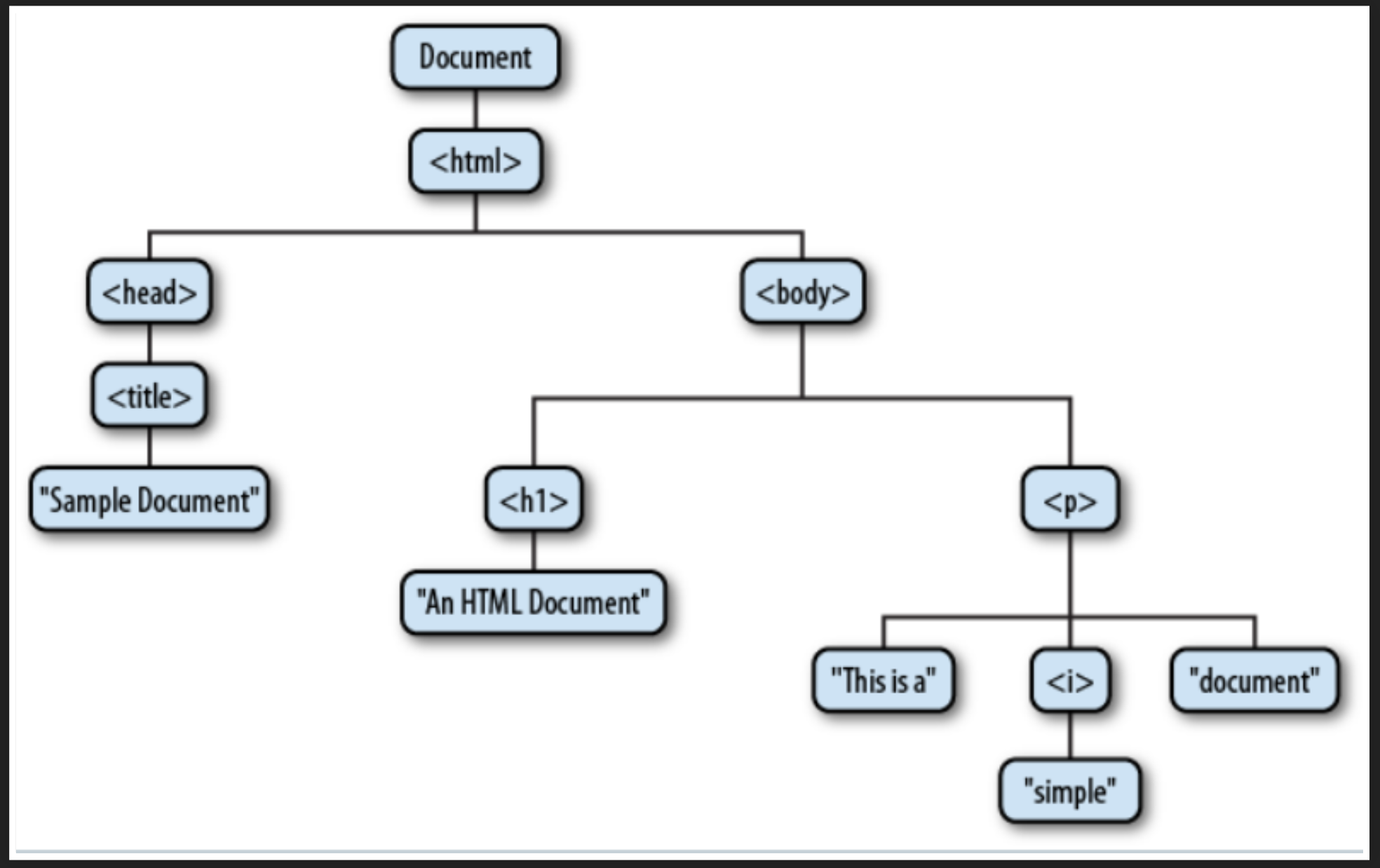Document Object Model
October 25, 2022
DOM
The Document Object Model provides a representation of your HTML to the browser in a tree data structure, allowing us to conduct element selection, document traversal, attribute setting, and document modification.
Sample Doc
<html>
<head>
<title>Sample Document</title>
</head>
<body>
<h1>An HTML Document</h1>
<p>This is a <i>simple</i> document.</p>
</body>
</html>
Terms
node - an object in a tree; an element or piece of text parent - the node directly above a node in the tree child - a node one level lower than the current node descendents - all nodes below a node ancestors - all nodes above a node
Select Elements
DOM Selection
DOM selection will allow us to locate and retrieve elements from the DOM.
Select Element
document.getElementById(id) - gets an element by the provided id
Select Elements
document.getElementsByName(name) - gets a NodeList of multiple elements by the provided name (acts like an array of Elements)
document.getElementsByClassName(name) - gets a NodeList of multiple elements by the provided name
document.getElementsByTagName(tag) - gets a NodeList of multiple elements by the provided tag
Selecting Elements
This is a CSS-based selector string so “#item” matches the id of “item”, “.banded” matches the class of “banded”, etc.
document.querySelector(selector) - returns the first element matching the specified selector
document.querySelectorAll(selector) - returns a NodeList of multiple elements matching the specified selector
Selection Example
const paras = document.getElementsByTagName('p');
for (let i = 0; i < paras.length; i++)
paras[i].style.display = 'none';Limiting Search
The previous methods do not need to be limited to “document”. You can also specify them off of another element to limit your selection to just that element’s children.
cost parasDiv = document.querySelector('#parasDiv');
const paras = parasDiv.getElementsByClassName('banded');paras would be a list of elements that had the class “banded” that were children of the #parasDiv element. Non-children with the “banded” class would not be in the NodeList.
Traversal
Document Traversal
DOM traversal allows us to traverse from an element through the DOM to find related portions of the document. This is good when we have an element and we need to do something to tis parent, siblings, or children.
Element.parentNode - the element’s parent node
Element.childNodes - a list of the element’s children (access like an array)
Element.firstChild -the first child of an element
Element.nextSibling - the next sibling in document order
Element.nodeValue - the text in a Text node
Element.nodeName - the tag name of an element

Attributes
With an element reference, we can get/set an Element’s attributes:
ele.id = 'newId';
ele.style.color = 'LightBlue';DOM Modification
DOM MODIFICATION
The DOM provides many methods to modify the DOM structure. This is very useful for having interactive client-side components.
Element Creation
First, create the node and set its inner HTML:
const para = document.createElement('p');
para.innerHTML = 'Hello, world!';Then, we need to add it somewhere in the DOM with append:
document.querySelector('#paras').append(para);Prepending is also possible, which makes the added element the first child of the calling element:
document.querySelector('#paras').prepend(para);Element Removal
const elementToRemove = document.querySelector('.banded');
elementToRemove.remove();